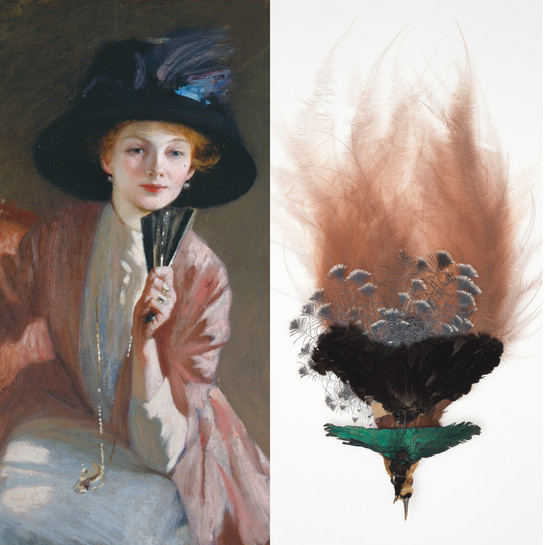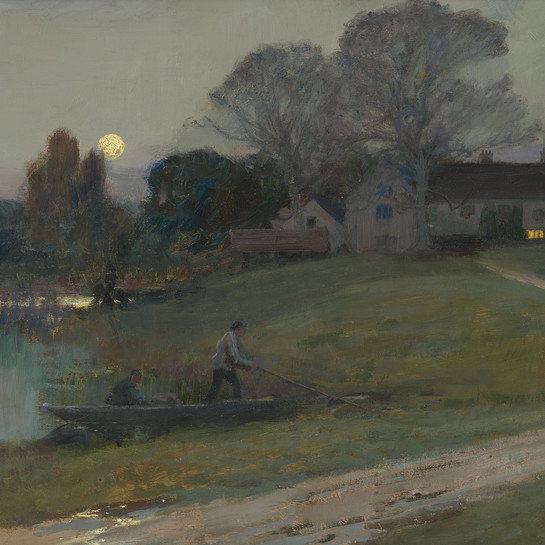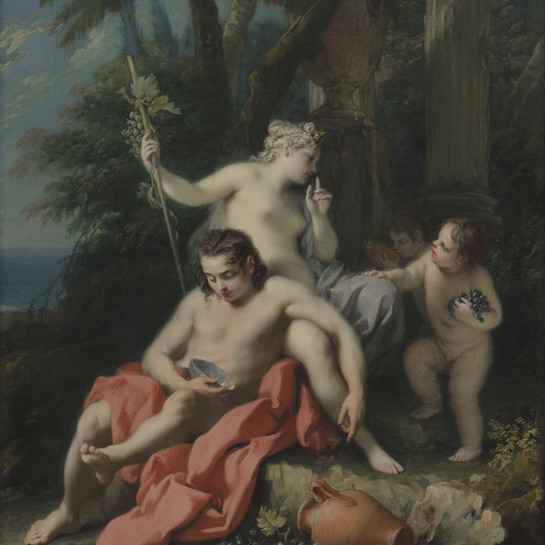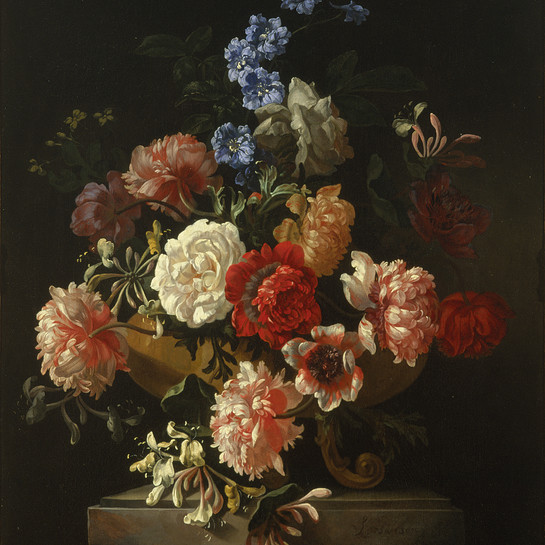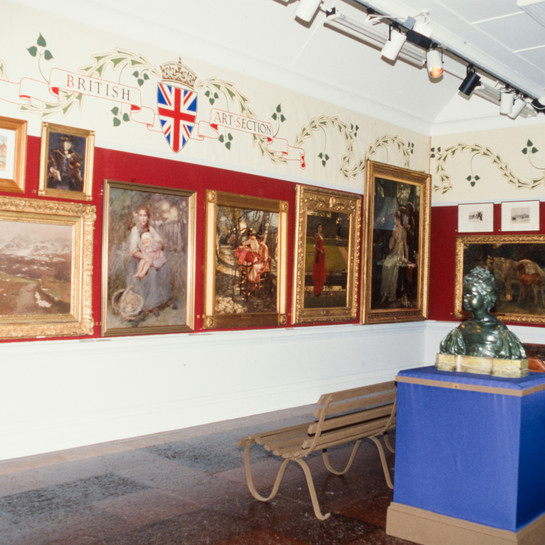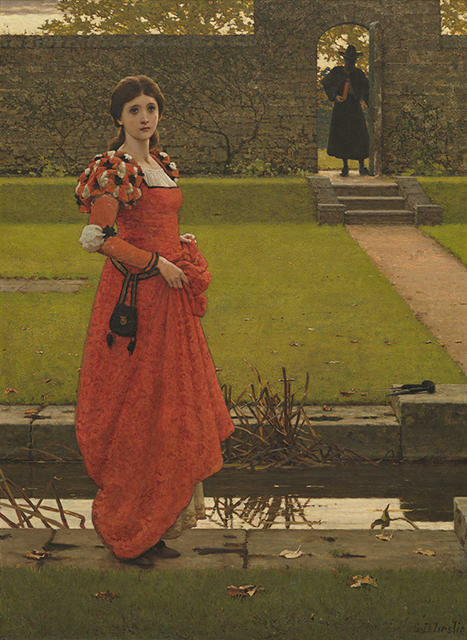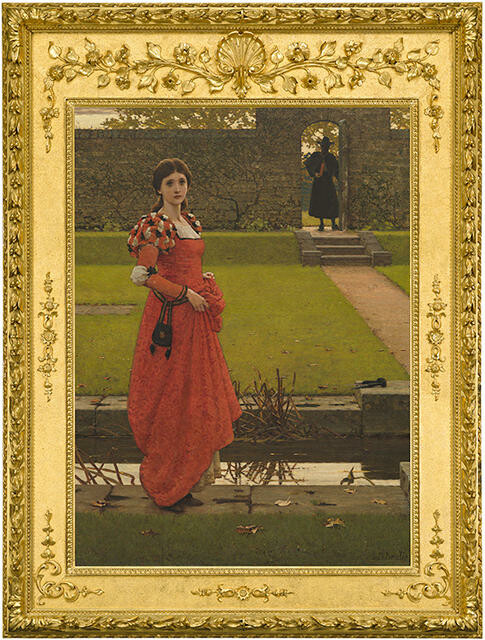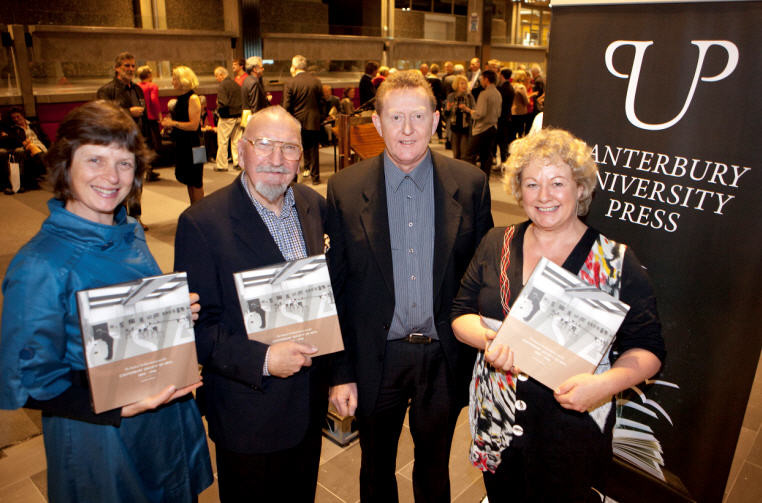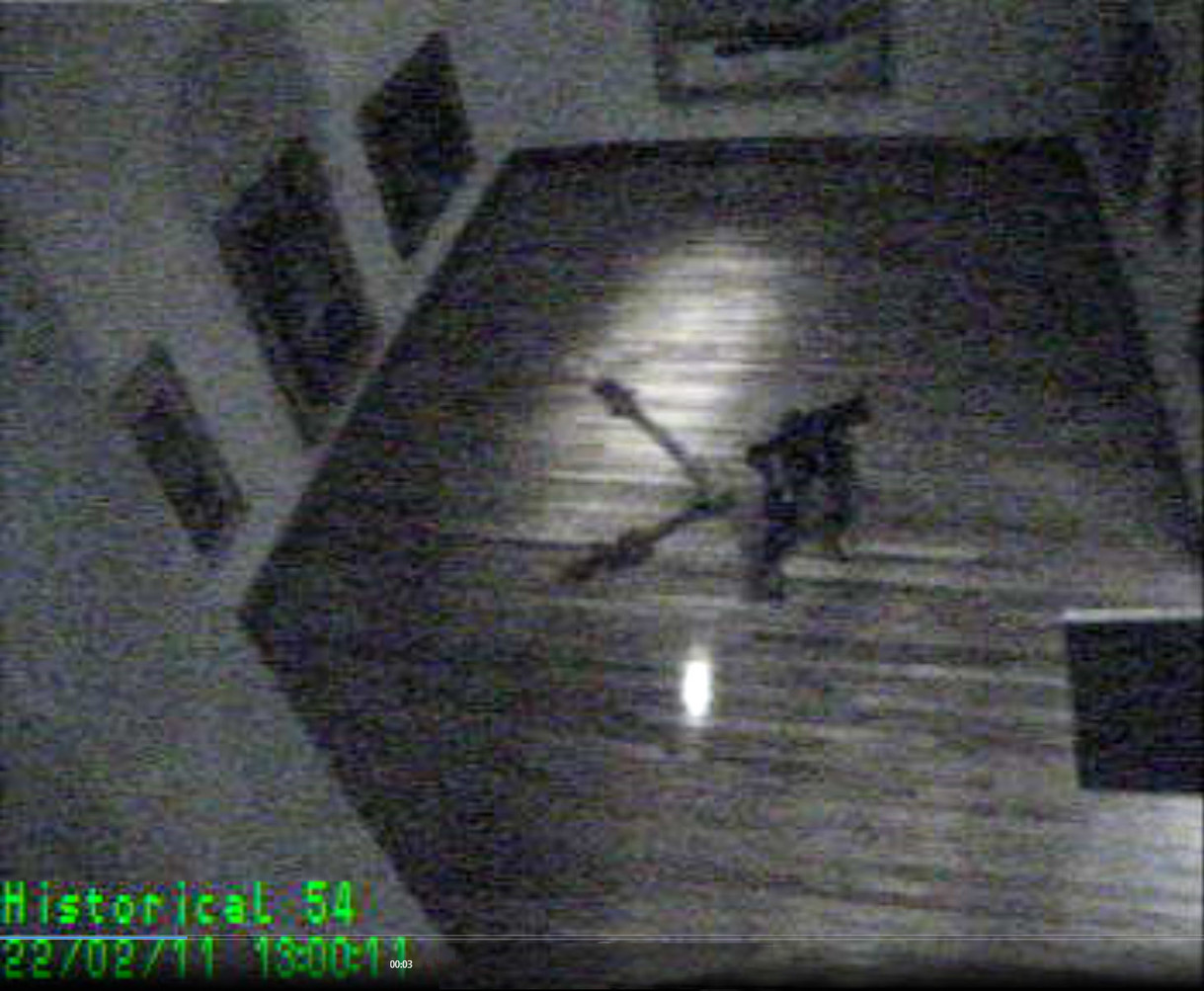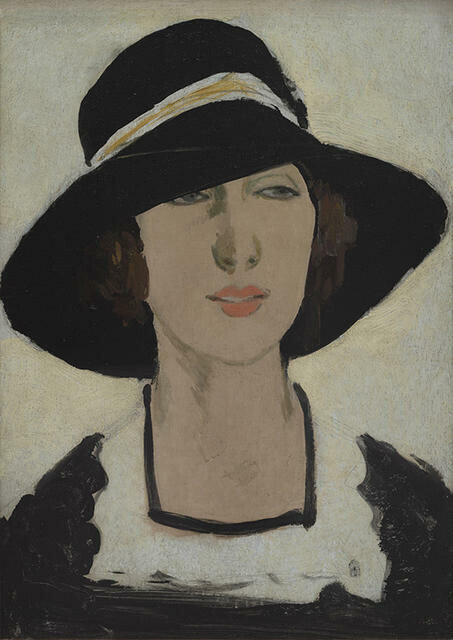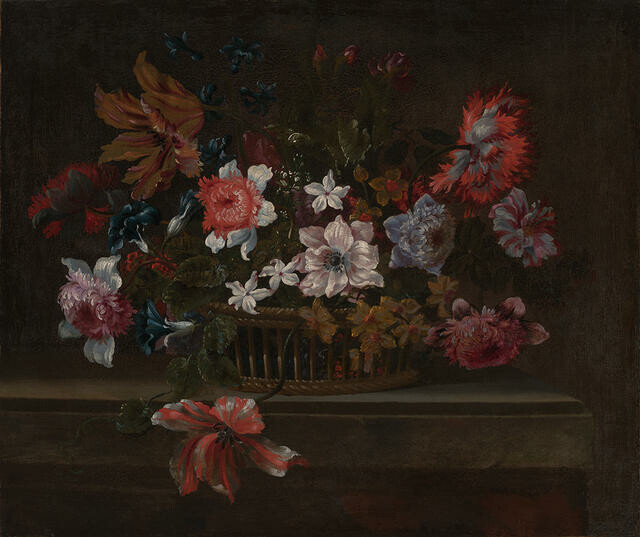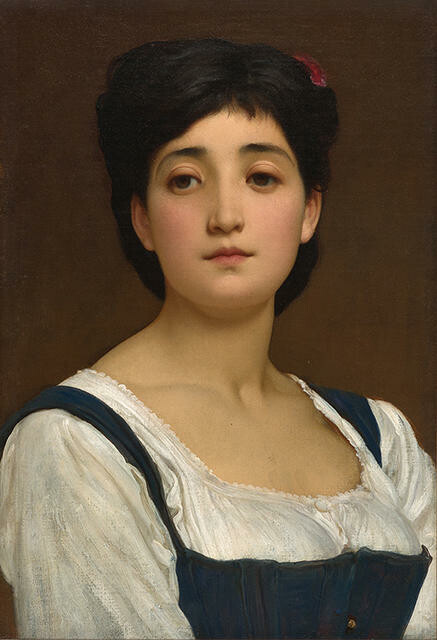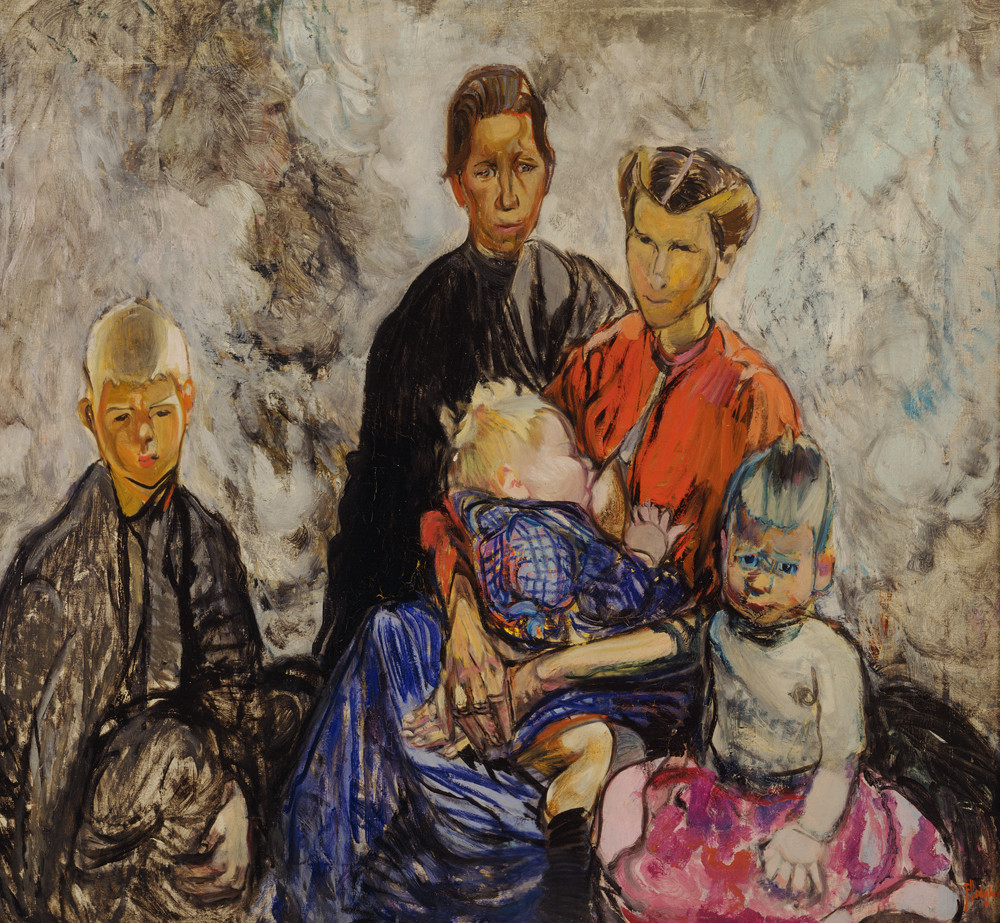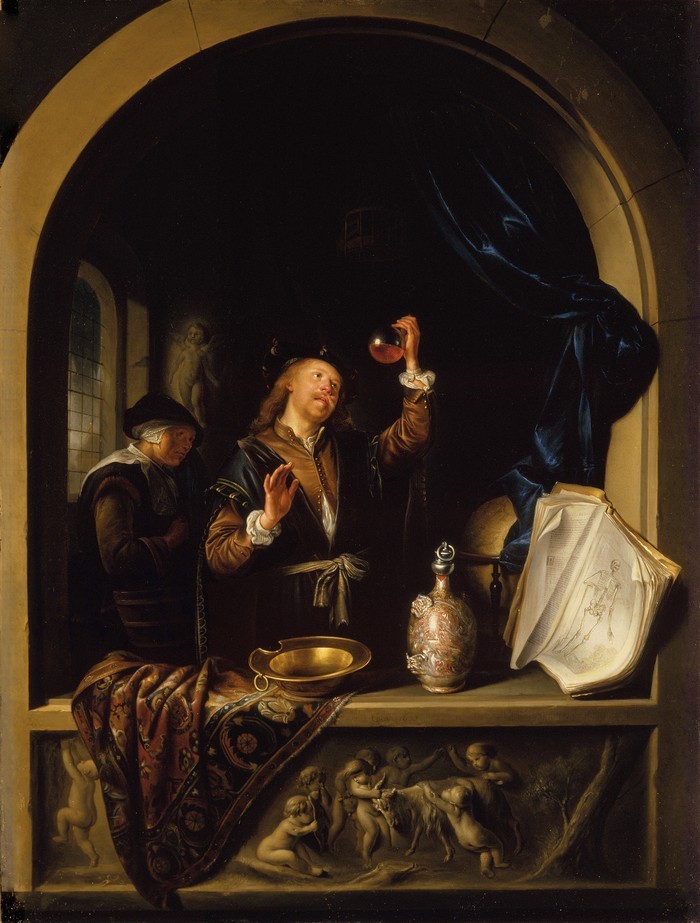George Dunlop Leslie
British, b.1835, d.1921
In the Wizard’s Garden
- c. 1904
- Oil on canvas
- Presented to the Canterbury Society of Arts by Wolf Harris, 1907; given to the Gallery, 1932
- 1536 x 1155 x 80mm
- 70/44
Tags: autumn, books, decision making, dresses (garments), gardens (open spaces), gateways, leaf (plant material), men (male humans), paths, people (agents), red (color), reflections (perceived properties), rivers, shears (cutting tools), silhouettes, streams, symbols, walls, wizards, women (female humans)
About the artist

George Dunlop Leslie
by John Watkins
albumen carte-de-visite, 1860s
NPG Ax14829
© National Portrait Gallery, London
Licensed under a Creative Commons Attribution-NonCommercial-NoDerivs 3.0 licence
George Dunlop Leslie’s ‘In the Wizard’s Garden’ was exhibited at the Royal Academy in London in 1904. It reflects the Victorian- and Edwardian-era taste for historical and literary themes, often interpreted as an escapist response to the uncertainties and pressures of the industrial age. The painting depicts a young medieval noblewoman seeking the guidance of a wizard to discover the secrets of the future. The theme is based on Nathaniel Hawthorne’s ‘Rappaccini’s Daughter’, a macabre tale set in a garden filled with poisonous plants. Leslie’s garden in Wallingford, Oxfordshire, served as the inspiration for the painting’s English setting. The painting was gifted to the Canterbury Society of Arts by Wolf Harris, a former Dunedin merchant and friend to many leading British artists.
Ship Nails and Tail Feathers, 10 June – 22 October 2023
Exhibition History
The Moon and the Manor House, 12 November 2021 – 1 May 2022
In response to the adverse impacts and uncertainties of the industrial age, many late Victorian and Edwardian British artists were drawn to somewhat escapist historical or literary themes. Lavishly displaying this tendency, George Dunlop Leslie’s In the Wizard’s Garden was first shown at the Royal Academy in 1904, and in New Zealand at the 1906–07 Christchurch International Exhibition. Because the painting puzzled visitors, Leslie was asked for an explanation of its meaning. Its unhappy subject was a young medieval noblewoman who had sought an alchemist or wizard’s guidance to discover the secrets of the future. The theme originated from American writer Nathaniel Hawthorne’s ‘Rappacini’s Daughter’, a macabre tale featuring a garden filled with poisonous plants. The setting of the painting was, however, English rather than Italian: it is known to be based on Leslie’s own garden in Wallingford, Oxfordshire. London-based, former Dunedin merchant Wolf Harris, a friend of many leading artists, bought the work almost as soon as it arrived in Christchurch and then gifted it to the Canterbury Society of Arts.
New Dawn Fades, 10 November 2018 – 23 February 2020
Narrative paintings such as In the Wizard’s Garden were extremely popular with Victorian audiences. Loaded with symbolism that referred to the notion of the fallen woman, the artist provided visual pointers to be unpicked and read by the audience. These include the hitched-up scarlet dress, the fallen leaves in the foreground and the shears which, shown with the blades open, suggest a loss of virtue. Contrasted with the innocence of the young woman, the presence of the silhouetted figure entering the garden adds a sinister element. The stream separating the two figures symbolises a barrier between them – her virtue hangs in the balance. Will she remain pure or will she, through the act of crossing the water, succumb to wantonness? George Dunlop Leslie was a successful, prolific artist who exhibited annually at the Royal Academy from 1859; usually theatrical, symbol-laden paintings of young women from a previous age.
(New Dawn Fades, November 2018)
Wizard's garden
Treasury: a generous legacy, 18 December 2015 - 4 December 2016
In the Wizard’s Garden was exhibited at the Royal Academy in 1904. Attending the opening was Wolf Harris (1833–1926), a Kraków-born, London-based Jewish businessman recorded by The Times as, ‘a great friend of many of the artists’, who had established a hugely successful importing and manufacturing company in New Zealand during the 1850s Otago gold rushes. When Leslie lent this painting for the 1906–07 New Zealand International Exhibition, Wolf Harris purchased it for the Canterbury Society of Arts; it was given to the city in 1932.
Brought to light, November 2009- 22 February 2011
'In the wizard’s garden' is loaded with symbols that refer to the notion of ‘the fallen woman’. These include the hitched-up scarlet dress, the fallen leaves in the foreground and the shears which, shown with the blades open, suggest a loss of virtue. The presence of the silhouetted figure entering the garden adds a sinister element that contrasts strongly with the innocence of the young woman. The stream separating the two figures symbolises a barrier between them – her virtue hangs in the balance. Will she will remain pure or, through the act of crossing the water, succumb to wantonness?
The shears with open blades, the red dress and the winter grapevine all have a symbolic role in this painting. They, with the woman’s thoughtful expression, suggest she is debating the possible loss of her virginity. The vaguely menacing wizard is blocking her movement out of the garden to the world of summer and life. George Dunlop Leslie’s work belongs in style to the much earlier paintings of the Pre-Raphaelites, a group of English painters active in the 1850s and 60s who insisted on the importance of serious and moral subject matter. Leslie was born in London. He went to the Royal Academy School and began exhibiting at the Royal Academy in 1857. He was a member of the St John’s Wood Clique, a small affluent community of artists based in St John’s Wood, London. His standing as an artist in England led to this work being selected for the ‘New Zealand International Exhibition’, in Christchurch, in 1906 and 1907. (Label date, May 2003)
This painting contains moralising symbolism that is normally associated with the Victorian era. The artist, George Dunlop Leslie, was a Victorian painter taught by his father, artist Charles Leslie (1794-1859).
George Leslie had a keen interest in gardens and gardening and the quiet formal English garden, with terraced lawns, clipped hedges, brick walls, and ponds becoming a favourite motif in his painting. Often he painted just the garden as a subject but frequently it was a setting to have acted out a simple moral narrative as in this work. The young woman who stands in the wizard’s garden is surrounded by dying leaves which in Victorian painting symbolised a woman who had lost her virtue.
In the Wizard’s Garden was exhibited at the Royal Academy. London in 1904 and was brought to New Zealand in 1906 for the New Zealand International Exhibition. It was purchased in 1907 by the Canterbury Society of Arts and presented to this Gallery in 1932. (Label date before 2003)
